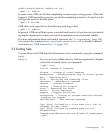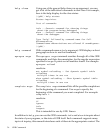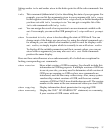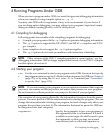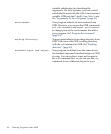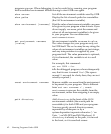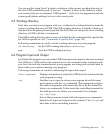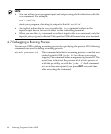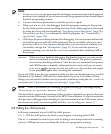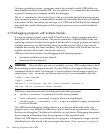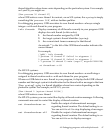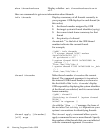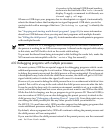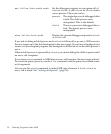You can use the string '$cwd' to refer to whatever is the current working directory at
the time GDB searches the path. If you use '.' instead, it refers to the directory where
you executed the path command. GDB replaces '.' in the directory argument (with the
current path) before adding directory to the search path.
4.5 Working directory
Each time you start your program with run, it inherits its working directory from the
current working directory of GDB. The GDB working directory is initially whatever it
inherited from its parent process (typically the shell), but you can specify a new working
directory in GDB with the cd command.
The GDB working directory also serves as a default for the commands that specify files
for GDB to operate on. See “Commands to specify files” (page 125).
Following commands are used to set the working directory for your program:
cd directory Set the GDB working directory to directory.
pwd
Print the GDB working directory.
4.6 Program Input and Output
By default, the program you run under GDB does input and output to the same terminal
that GDB uses. GDB switches the terminal to its own terminal modes to interact with
you, but it records the terminal modes your program was using and switches back to
them when you continue running your program.
Following commands are used for redirecting the input and output:
info terminal
Displays information recorded by GDB about the terminal modes
your program is using.
tty
Another way to specify where your program should do input
and output is with the tty command. This command accepts a
file name as argument, and causes this file to be the default for
future run commands. It also resets the controlling terminal for
the child process, for future run commands. For example,
tty /dev/ttyb
directs that processes started with subsequent run commands
default to do input and output on the terminal '/dev/ttyb' and
have that as their controlling terminal.
4.5 Working directory 43



